We are often asked, what is a good SEER rating? But, there is more to a good SEER rating than meets the eye.
We typically base our posts on the questions our customers ask most often, and figuring out the proper SEER rating for their heating and cooling system is up there in the ones we get asked most often.
But, unfortunately, there are plenty of salesmen out there who will tell you outrageous claims, like a 21 SEER air conditioner will pay for itself.
Today we will figure out the correct SEER value for you and your family by first explaining what SEER is.
Then, we will address why a high SEER air conditioner or heat pump might not be worth the extra money and examine the most common high SEER myths.
✋ Finally, we’ll discuss a good SEER rating for you and your home.
Table of Contents
⭐ What is a Good SEER Rating? A Brief History of SEER, and What it Means.
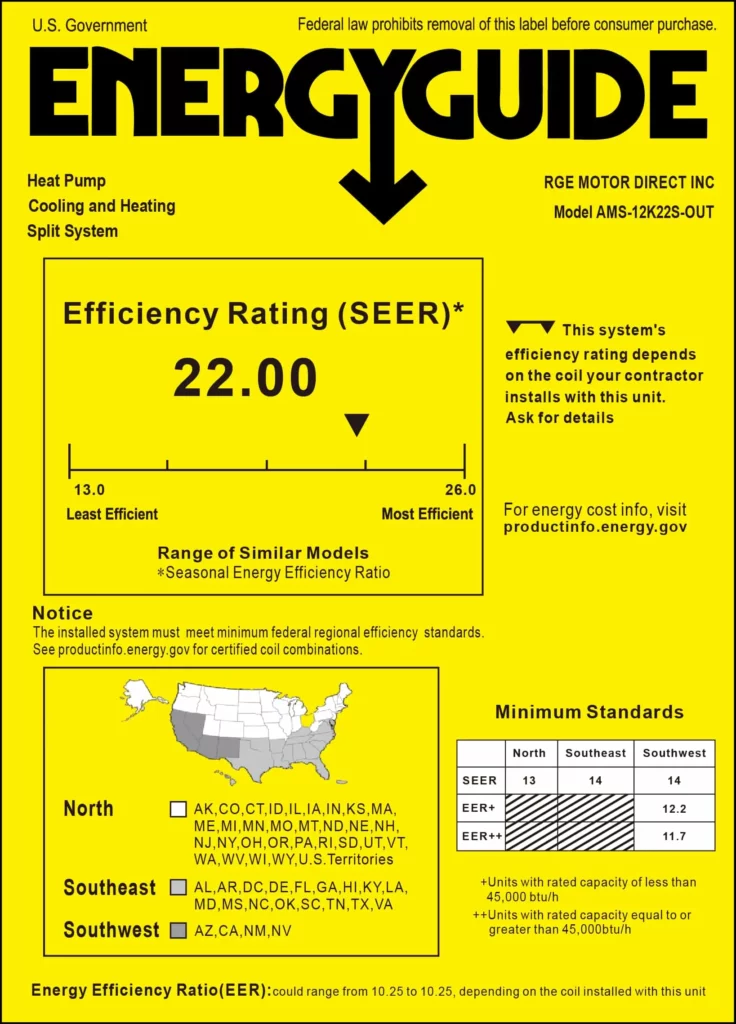
Before discussing a good SEER rating, we need to understand SEER itself – feel free to skip this section if you’re already familiar.
SEER stands for “Seasonal Energy Efficiency Ratio,” commonly referred to [incorrectly] as “Seasonal Energy Efficiency Rating.”
Sometimes the term EER is bought into this discussion, and you can find out more about it here: EER VS SEER: How to Use EER and SEER to Compare AC Units.
🏠 SEER Rating
A SEER rating is the ratio of the cooling output of an air conditioner over a typical cooling season, divided by the energy it consumed in Watt-Hours.
It is essential to distinguish that it is the average calculated over a cooling season and is figured using a constant indoor temperature and a variety of outdoor temperatures, ranging from 60°F to 100°F, thus simulating a typical season.
Modern air conditioners have a SEER value ranging from 13 or 14 SEER as a minimum SEER rating (depending on your state’s requirements) to a maximum efficiency of 21 or 25 SEER (based on current technology limitations).
California, for instance, has a minimum SEER rating requirement of SEER 14. A northern state such as Washington only has a minimum requirement of 13 SEER.
Unfortunately, people often equate these SEER values to “low efficiency” or the “bottom of the line.”
But this couldn’t be further from the truth – older air conditioners, like the one you probably have in your house right now, were rated at around 8 or 9 SEER.
So in actuality, modern 14 SEER air conditioners are still drastically more energy efficient than your older unit. So if you are buying a new air conditioner, your efficiency will already be going up noticeably.
SEER rating is not a constant value
Plus, a SEER rating is not a constant value – it’s a maximum rating. Here is something that I want you to remember, even if you forget everything else from this post:
A SEER rating is a maximum rating, meaning it should be read as: this unit’s rating can be as high as 21 SEER. That doesn’t mean that it is ALWAYS 21 SEER.
Think of SEER ratings as being like Miles Per Gallon (MPG) for your car.
You can get a high MPG car, but you will not get a high MPG rating if you drive it like Lewis Hamilton.
Likewise, if you are constantly changing the temperature of your house, or if it is cool in the evening and hot in the middle of the day, you will not net the full potential of your SEER value.
The SEER value is that unit’s maximum potential.
“But Jake! My HVAC guy said the 21 SEER would pay for itself in 10 years!”
If you believe that, I have a coastal property to sell you in Arizona…half price for my friends.
Remember, a SEER rating is a maximum rating; it does not mean that it is always running at 21 SEER… but we will discuss this in more depth later.
✅ 2023 Update: As of January 1, 2023, new product regulations for the Department of Energy, also known as SEER2, will come into force. This reflects changes in the testing procedures for central air conditioners and heat pumps. The testing parameters will push down SEER ratings, which means HVAC contractors cannot sell or install HVAC equipment that doesn’t meet the new requirements.
⭐ Is a Higher SEER Rating Worth the Money? SEER Myths Debunked.
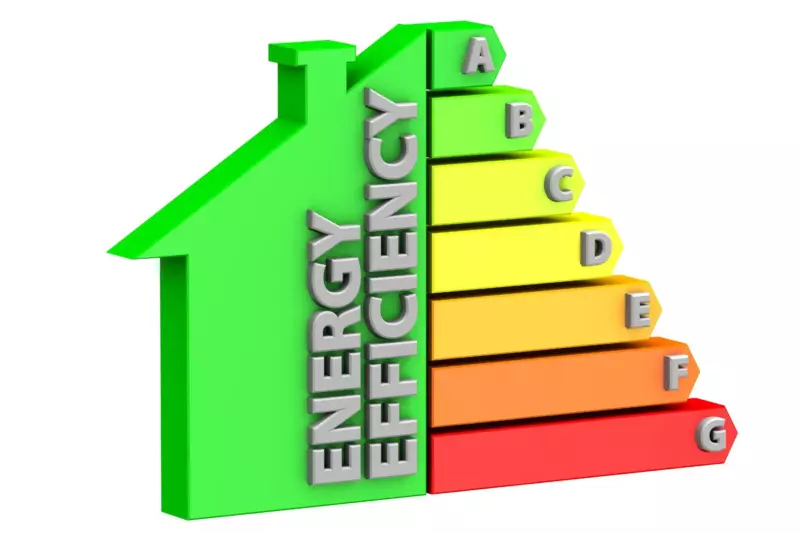
Remember, if we were just trying to make money off you, we would be pushing high SEER equipment.
But is a high SEER a good SEER rating for you and your money?
Maybe not. Think about it…
High SEER equipment is typically twice as expensive as the base model, and our profit markup is based on equipment plus labor.
But I’m not interested in getting more money. I’m interested in making my customers happy…so they use me next time.
Besides, I hate high-pressure, dishonest sales tactics… which is why I drive an old truck every day…
So I deal with car salesmen as seldom as possible.
So what is a good SEER rating, and are high SEER ratings worth the money?
To answer these questions, we should first discuss some common myths associated with high SEER units.
Here are some of the common myths that you will encounter when shopping for your high SEER air conditioning units:
💡 Myth #1: Buying a High SEER Unit Will Pay for Itself!
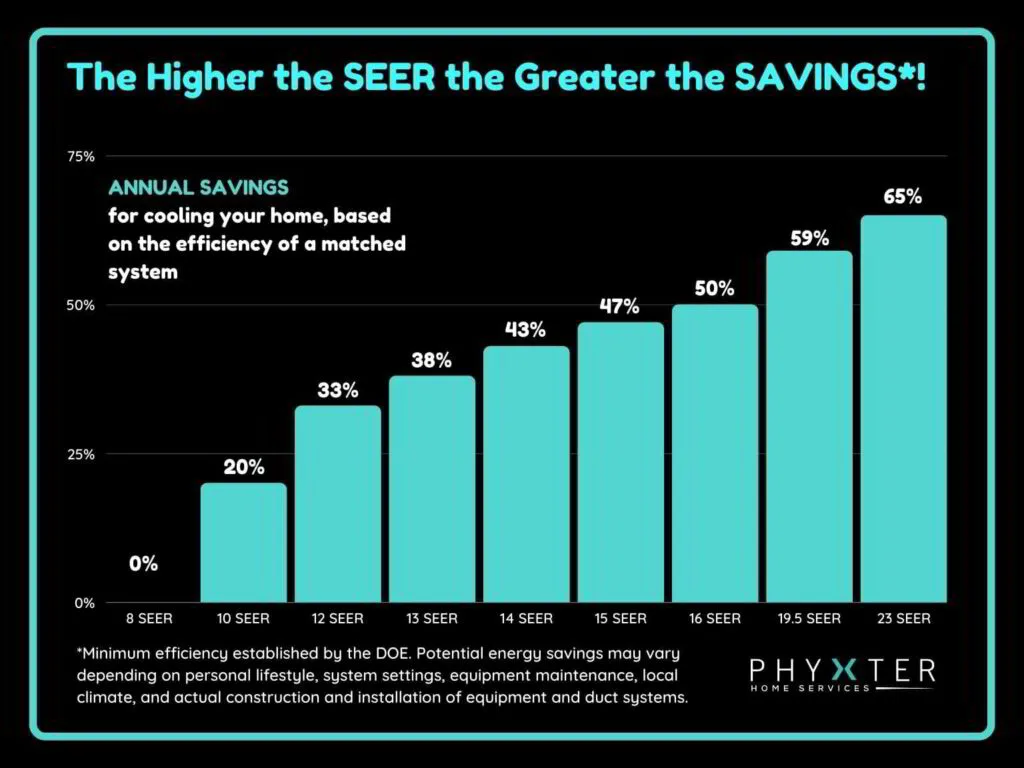
For example – the energy savings graph promises huge savings from upgrading your air conditioner’s SEER value – is it true?
If you Google the SEER savings calculator, you will be swarmed by posts about how much you can save by updating your SEER value.
Here’s a SEER Savings Calculator from Lennox.
But I must respectfully disagree with their conclusions.
Is it true that you can save this much with a high SEER unit?
I’m interested in what a good SEER rating is for you, not which SEER value will give them the highest profit margin.
It’s nice to believe… but if it’s too good to be true, as my father taught me, it usually is.
So let’s investigate why this might be so:
📋 Contention 1:
You can’t predict energy usage using the SEER value. So, where does this myth come from?
The answer is simple – they calculated the energy usage by looking at the SEER value and multiplying it with the energy cost over time.
But as you read above, SEER is a variable!
More goes into calculating a good SEER rating (discussed more later).
The SEER value is constantly changing, just as the MPG changes on your car.
Therefore, it is fallacious reasoning to use the maximum SEER value to calculate average energy usage over time.
Contrary to these estimates, our clients who have opted for the 21 SEER equipment typically report a $50-$75 difference in their electric bills.
So, is this a good SEER rating for you and your family? Keep reading…
📋 Contention 2:
High SEER units cost more… a lot more.
High SEER equipment will typically cost you $2,500-$4,000 more than base model equipment, putting the total installation cost, including ductwork, at well over $13,000…
So you are telling me that by paying $4,000 more over 15 years, you will be able to pay for $13,000 worth of equipment?
I’m interested in what a good SEER rating is for you – so is a 21 SEER air conditioner worth the money?
Let’s see…we have studied how much people’s electricity bills actually change after installing high SEER equipment.
The difference is typically around $50-$75/month for a SEER 21 unit in Southern California.
SEER Rating Calculation
So let’s do the math:
⭐ $75/month X 12 months = $900/year
⭐ $900/year X 15 years (typical life expectancy) = $13,500 total savings
I know what you are thinking….” Jake! Look! $13,500 saved with the 21 SEER!” Hold your horses, sparky. We aren’t finished yet.
Let’s ask a couple of questions:
Why do you live in California? “Because the weather is nice” is typically the answer.
So, if the weather is nice, do you run your air conditioner year round…?
Of course not. Most people in Southern California run their air conditioners four months out of the year, and use them sparingly during another two months out of the year, split evenly between Spring and Fall.
So, given this fact, in actuality, the math should look something like this:
⭐ [($75/month X 4 months) + ($75/month X 0.5 X 2 months)] = $375/year
⭐ $375/year X 15 years = $5,625 total savings
So our actual savings are around $5,625 over 15 years…
Still a little bit ahead of where we’d be with the base model equipment, right? But we aren’t finished!
High SEER air conditioning components are typically two to three times more expensive than their base-model counterparts.
So, for argument’s sake, let’s just say that you have a relatively routine repair done…
What would be a $300 repair on a standard 14 SEER air conditioner to become a $900 repair on your high SEER model? That’s just if one thing goes wrong.
At Phyxter, we pride ourselves on our workmanship, but to say that an engine that will run for fifteen years straight is never going to need servicing, is just plain unrealistic.
It will need to be repaired a few times over its lifetime; that’s just the reality.
So, being the eternal optimists that we are, let’s just say, for argument’s sake, that it only breaks down once, at a repair cost of $900.
⭐ $5,625 – $900 = $4,725
But wait! Those of you who are mathematicians out there have been chomping at the bit for this one…
We never accounted for the other unit! Remember? We calculated what a 21 SEER unit would save you.
Still, we are actually comparing it to a 14 SEER unit, which would be what you’d get had you not chosen to upgrade to the 21 SEER unit.
I’m getting lazy now, but if you do the math, it actually ends up that the 14 SEER saves you some money, too.
If you remember, your old unit only had a SEER rating of around 8 SEER, maybe 10, if you are lucky.
So by getting a 14 SEER unit, you are actually upgrading anyway, whether you realize it or not.
So if you trust me and do the math, you save a little over $2,000 over your old unit by going to 14 SEER.
⭐ $4,725 – $2,300 = $2,425 actual savings with the 21 SEER over 15 years.
This is LESS than what you paid for the upgraded equipment.
So as you can see, in reality, the amount that we really save with a high SEER unit is already approaching the additional price we paid for this equipment, which is a highly optimistic example.
But, not to be a Grinch, your situation might be different.
Maybe you run your air conditioning unit year-round, or you just like the idea of saving electricity for the sake of the environment!
Those are questions that I can’t answer; I’m just giving you the facts: your high SEER unit probably won’t even pay for the additional cost of the upgraded SEER value, let alone pay for the whole system, as the salesmen would have you believe. You get the point…
For example – higher SEER means lower energy bills – but is it true?
💡 Myth #2: Upgrading Your Condenser to SEER 21 Makes Your Entire System SEER 21
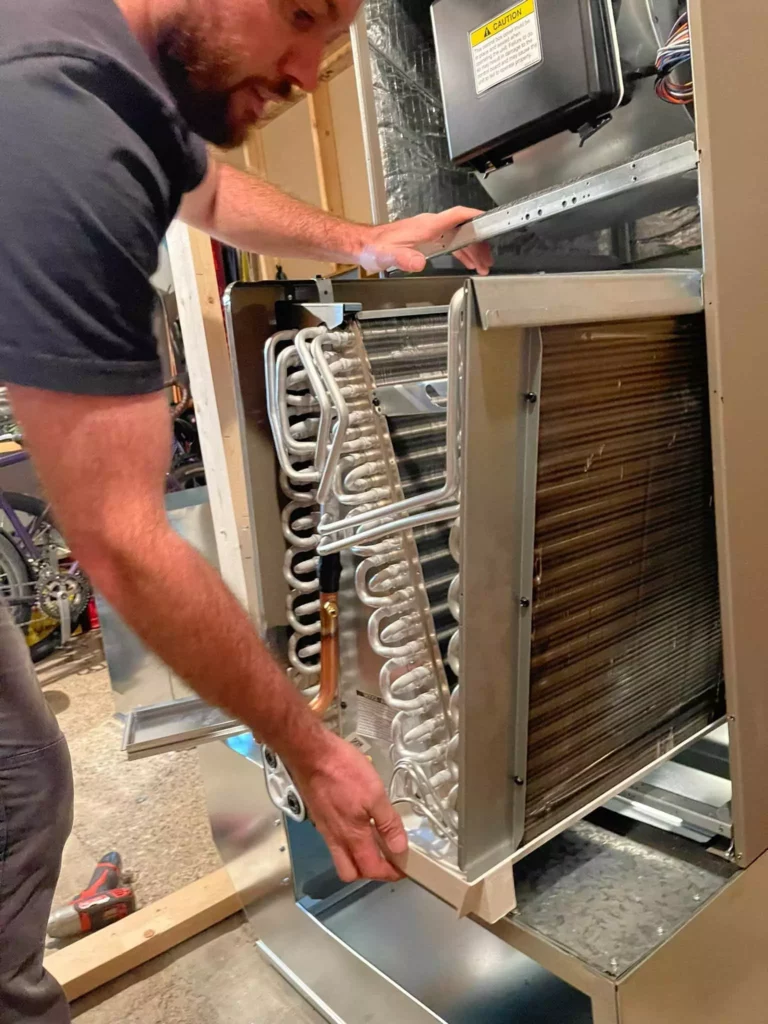
Many people who ask us, “what is a good SEER rating? ” also wonder how they can save money when upgrading their SEER value.
Unfortunately, one of the biggest fallacies is that you can increase your SEER value by purchasing a high SEER condenser.
The answer is NO. You can’t just increase one component at a time – it’s a package deal!
📋 Contention 1:
Adding a high SEER condenser to an otherwise standard system will not increase its SEER value. Some salespeople are either dishonest or don’t know what they are talking about.
Either way, they tell people that changing the condenser will increase their SEER value and save energy. This just isn’t true…
It is the equivalent of dropping a 1.5L engine into a truck designed for a 6.0L engine. Would you get better gas mileage?
Wrong… that little thing can’t even get the truck up a hill, let alone pull a rig, and as it strains, it will be burning tons of gas.
Perhaps this example wasn’t the best, but I’m trying to illustrate that upgrading your SEER value is a package deal.
You can’t drop a random engine into a truck made for a large engine – it just won’t work correctly.
Likewise, to increase your SEER value, you need to upgrade everything as a package: condenser, evaporative coil, and furnace to increase SEER and work together efficiently and in conjunction with one another.
💡 Myth # 3: High SEER Equipment is Better Made.
No, it’s not. All companies build their units to the required specifications. Period.
A good SEER rating is more about whether it is worth the extra money you will spend for the upgraded efficiency, not the quality of the equipment.
The quality will typically be the same.
📋 Contention 1:
All equipment is the same quality – you are paying for increased efficiency.
One of the HVAC manufacturers, Day & Night Heating & Cooling Products, uses the same type of coils in each unit, only changing the coil’s size and the compressor’s type as the efficiency rating increases.
Each of these coils is also made by the same company, Aspen coils, which, as luck would have it, also makes the coils for Carrier and Bryant.
Imagine that… I’ll save you my usual rant about how all brands are basically the same and the differences result from proper (or improper) installation.
Don’t skimp on your HVAC contractor – I’ll leave it at that for today.
Related Reading: How to Find a Good HVAC Company
More goes into calculating a good SEER rating (discussed more later). The SEER value is constantly changing, just as the MPG changes on your car.
Therefore, it is fallacious reasoning to use the maximum SEER value to calculate average energy usage over time.
Contrary to these estimates, our clients who have opted for the 21 SEER equipment typically report a $50-$75 difference in their electric bills.
So, is this a good SEER rating for you and your family? Keep reading…
📋 Contention 2:
Second, I hate to say this, but I haven’t been all that impressed with the high SEER units regarding reliability.
They utilize two-speed or variable-speed compressors to get their SEER values up.
This essentially allows them to lower their speed on the compressor, allowing them to change from a 5-ton unit, for instance, to draw the same electricity as a 2.5-ton air conditioner, thus saving energy.
The problem is that this technology is relatively new, and the reliability isn’t quite there.
Plus, when it comes time to fix them, as previously mentioned, replacement parts can be three times as expensive!
The short answer is that you are paying for higher efficiency, NOT higher quality.
⭐ What is a Good SEER Rating? The Real Deal.

So, we’ve discussed what SEER is and some of the common myths associated with the high SEER units; now, let’s delve into the question:
⭐ What’s a good SEER rating for air conditioners and heat pumps?
✅ Target a SEER 14 or SEER 16 Unit
14 SEER is the standard for Southern California on all new units. I just have difficulty justifying going much higher than that for the reasons above.
The 14 SEER units are a good SEER rating for most people… they are our work-horses; rugged, tough, and most importantly, reliable.
However, as the SEER rating goes up, just as with any new technology, you trade off a bit of your reliability. I don’t like that.
✅ A Good SEER rating for Most Applications is 14 or 16 SEER.
We install whatever our clients want, but not without a good fight – sometimes, we have to save them from themselves.
It is a bit of an awkward conversation when you, as a salesman, are actually trying to get someone to spend less money. Reliability is essential to us.
Think about it – this is what we built our reputation on – honesty and reliability.
I’m not interested in high SEER units if they are less reliable. In my opinion, the technology just isn’t there yet – especially with the variable speed compressors.
Stick with 14 or 16 SEER… they are a good SEER rating for most people, and most importantly, they are reliable.
16 SEER is Usually a Good Compromise
If you’re looking for a higher SEER unit, one viable option is to upgrade to a 16 SEER unit.
The 16 SEER units are slightly more energy efficient but still avoid using variable speed compressors, which, in this instance, affects the unit’s reliability.
16 is a good higher SEER rating for those looking for a bit higher efficiency without the ridiculous price tag. They typically run only around $600-$700 more than their 14 SEER counterparts.
⭐ What Is The Difference Between SEER and SEER2 Ratings?
SEER is based on the previous calculation to determine the ratio of cooling output during the entire cooling season or heating season for heat pumps, divided by the energy input in watt-hours.
SEER2 is the new standard, and its calculation uses the new M1 procedure for blower testing.
SEER2 includes the total amount of heat removed from the conditioned space during the cooling season or the total heat added to the conditioned space during the heating season.
The new M1 testing procedure increases the external static pressure by 500% to better match the actual conditions of installed equipment.
⭐ Why Energy Ratings are Changing
The efficiency standards changed in 2023 because the DOE and the entire HVAC industry could see that the SEER calculations were not based on real-world conditions.
SEER2 attempts better to simulate the real world in a test environment.
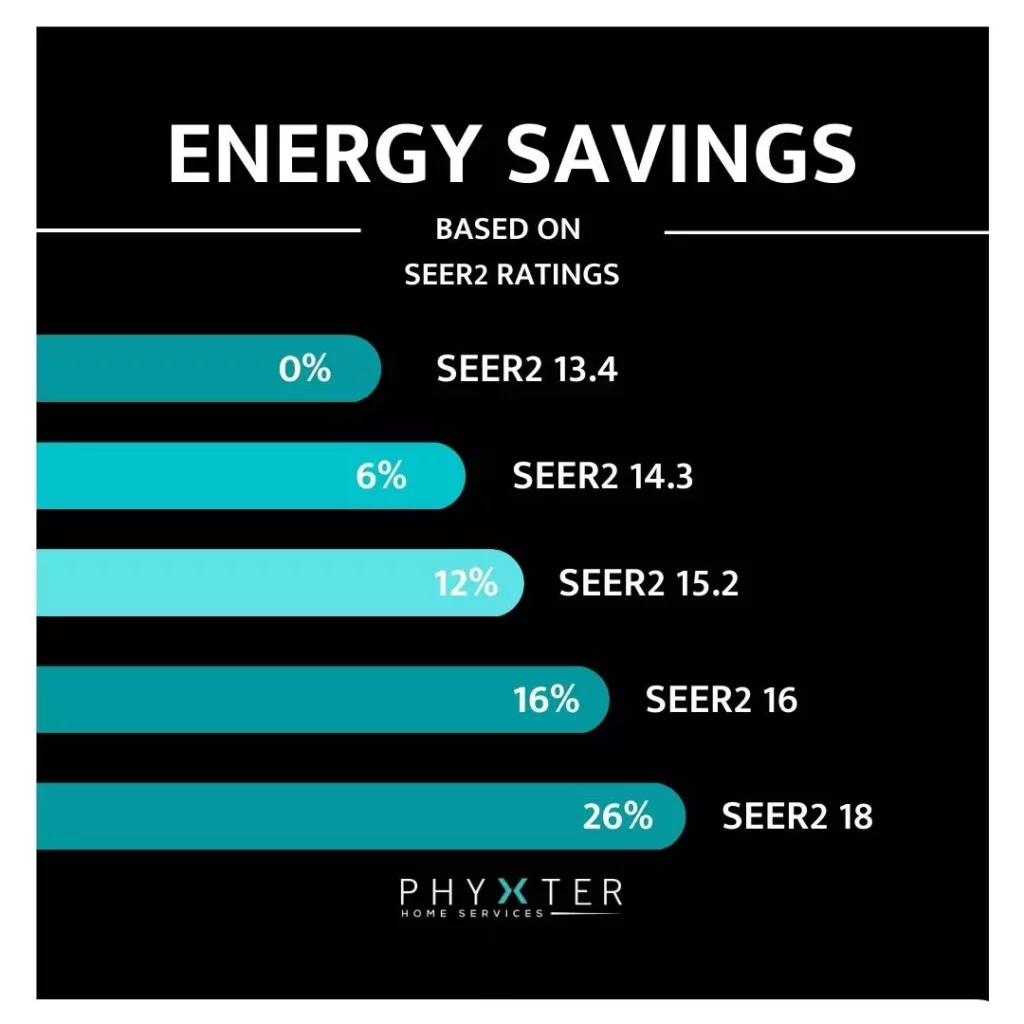
The higher the SEER2 rating, the lower the energy consumption.
⭐ Benefits of a High SEER2 Rating or Ratio
Higher Energy Efficiency
Let’s assume we’re comparing two SEER ratings for a new air conditioner (or heat pump) in the same home.
If both systems are 3 tons in capacity, but one system has a minimum SEER rating of 13.4 while the other has a minimum SEER rating of 16, then it’s logical to assume that because the 16 SEER system is more efficient, it will not only decrease your energy costs, but it will also run less, which means it should last longer.
Greater Indoor Comfort
If you go the extra mile and purchase a two-stage or modulating AC or heat pump, you also benefit from having a more comfortable home.
The reason for this is that the system will run for more extended periods but at reduced capacity, which is easier on the equipment while providing a more even temperature throughout the home.
⭐ Final Thoughts on AC Efficiency
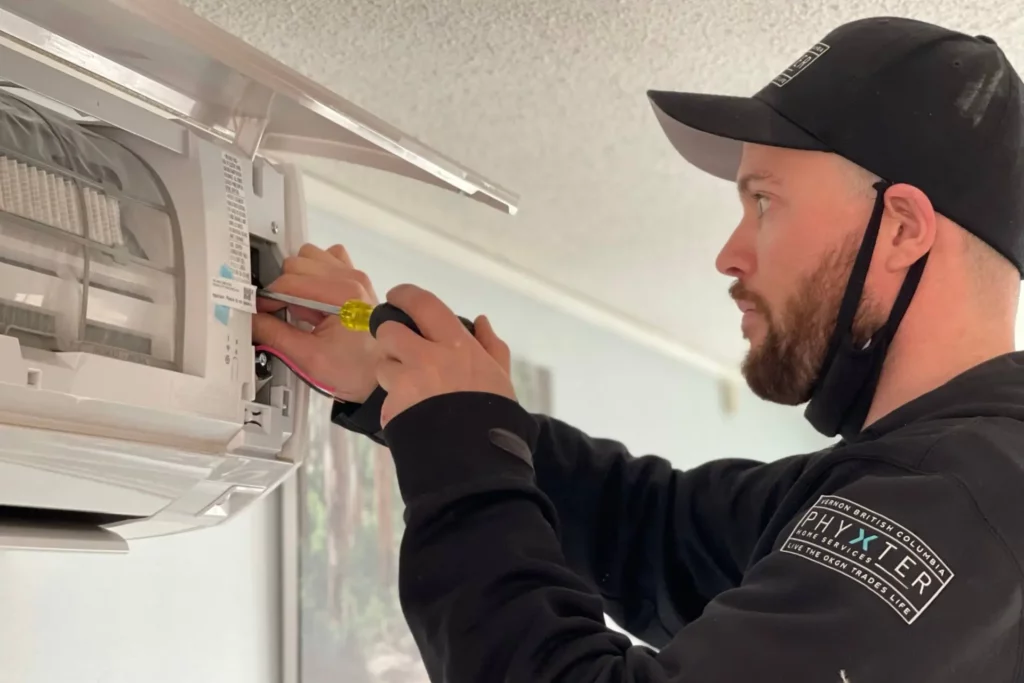
Many parts go into figuring out good SEER ratings for you and your home.
It may have seemed like I was bashing the high SEER units in today’s article a bit, and somehow, I was.
But it is essential that you have all the information before making your decision.
The bottom line is that, for most people and their central air conditioners, especially in places like California (where it can swing from 32 degrees at night to the 90s during the day).
It probably isn’t worth the money for a high SEER air conditioner.
14 or 16 SEER are good SEER ratings for most applications, so be wary of some sales tactics.
It won’t pay for itself unless you run it 24 hours a day for 15 years.
A 21 SEER unit might be a good rating for you if you live in the middle of the desert, run your air conditioner year-round and keep it relatively cold inside, or are just a proponent of minimizing energy usage and going green.
These are all reasons you might consider purchasing a high seasonal energy efficiency ratio unit.
However, a high seasonal energy efficiency ratio will be less reliable in the end than a sturdy 14 SEER or 16 SEER air conditioning system.
I hope this has helped answer your questions about SEER ratings for your new air conditioning unit.
Feel free to follow our blog for more HVAC tips.
If you live in North or Central Okanagan, give us a call. We can set you up with a reliable air conditioner with the right SEER rating for your home and budget, professionally installed by the best HVAC technicians on the market.

